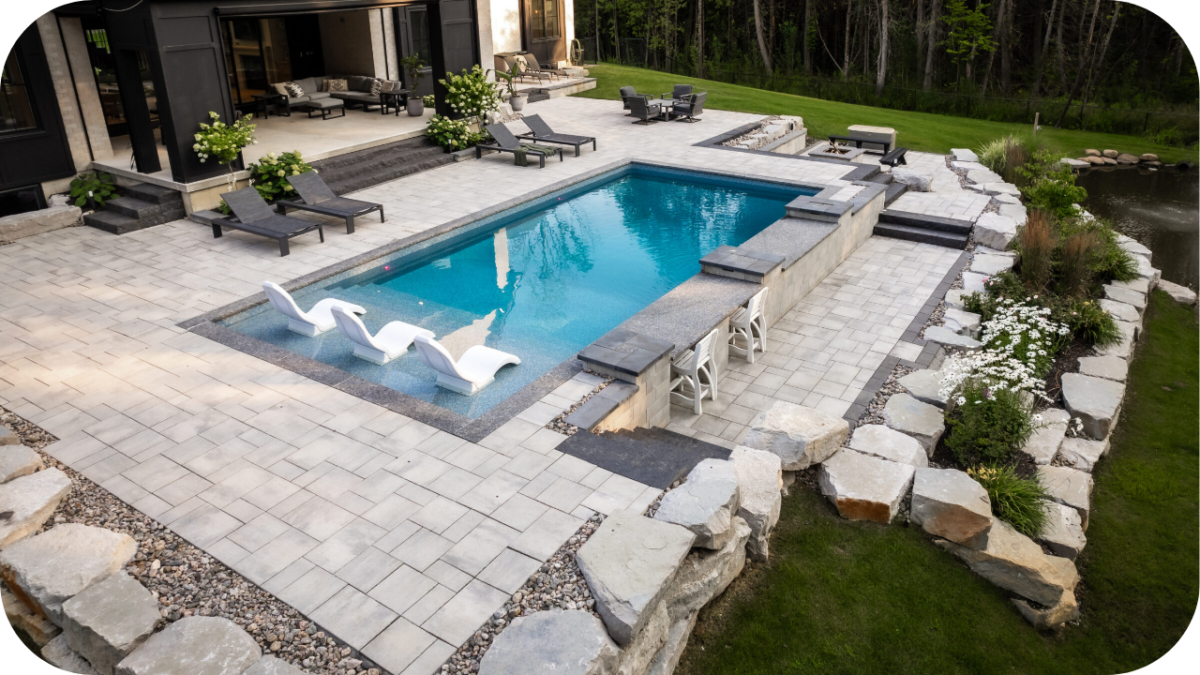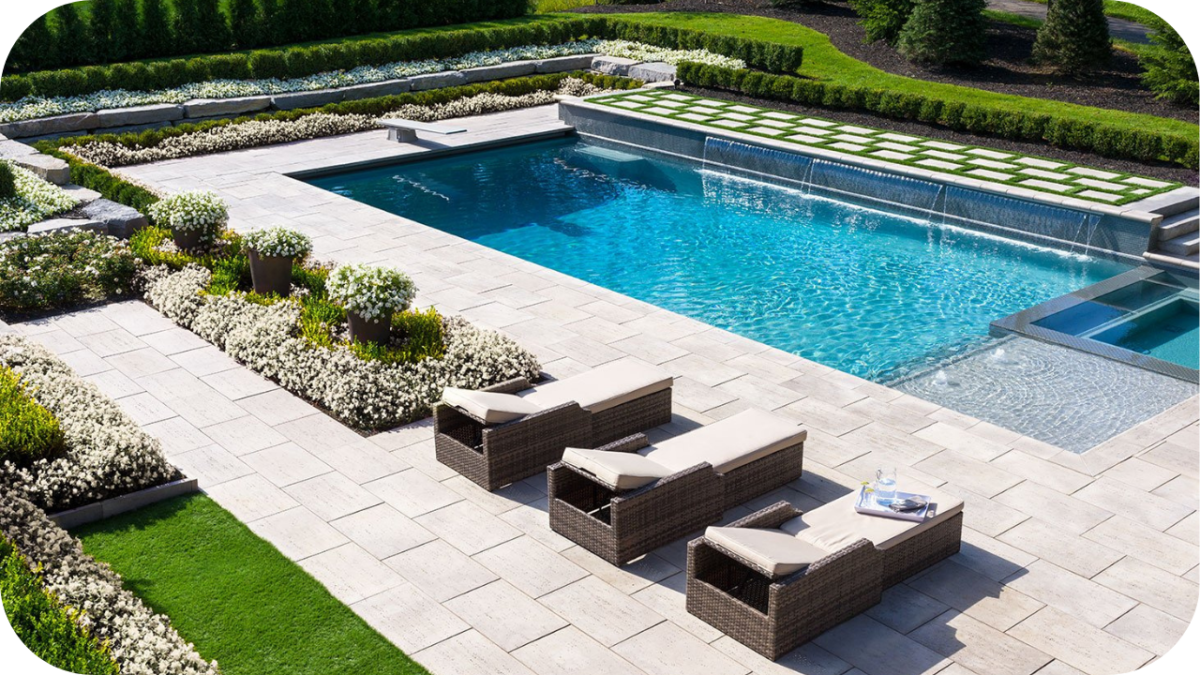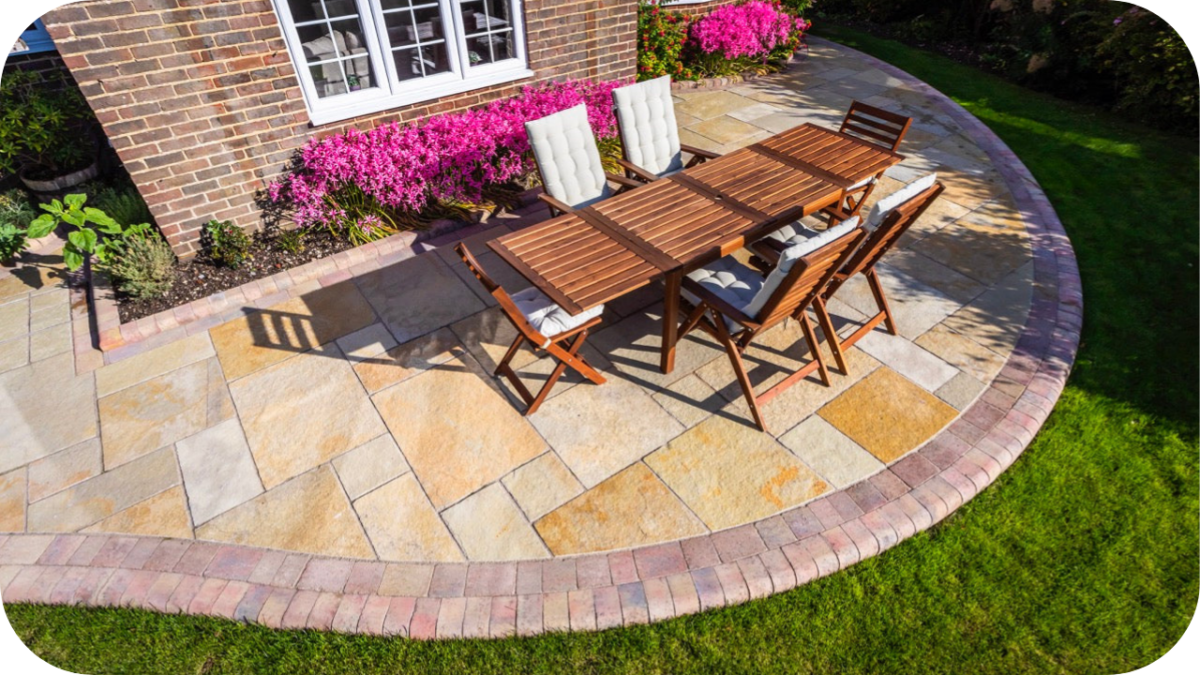Stunning Alfresco Spaces Using Stone Pavers
Few things capture the Australian lifestyle quite like a well-designed alfresco space. It’s where everyday meals become weekend rituals, and outdoor lounging turns into effortless entertaining.
As this trend continues to grow, homeowners are turning to natural stone pavers to bring timeless beauty, texture, and durability to their outdoor areas. When chosen with care, these stones don’t just pave the ground; they set the scene for unforgettable moments under the open sky.
In this article, we’ll show you how to craft truly stunning alfresco spaces using the right stone.
Top Benefits of Using Stone Pavers in Alfresco Areas
Stone pavers do more than just look good, they bring practical and long-lasting value to your alfresco space. Here are the top benefits you’ll enjoy when choosing stone pavers for your outdoor area:
- Enhance visual appeal: Natural colours and textures bring warmth, depth, and architectural interest to any outdoor zone.
- Built to endure: Ideal for Melbourne’s climate, stone pavers resist cracking, fading, and wear even under harsh conditions.
- Low maintenance upkeep: Sealed properly, they shrug off stains, dust, and mildew with minimal cleaning.
- Safe underfoot: Textured finishes provide natural slip resistance, perfect for families, pets, and pool surrounds.
- Eco-conscious material: Responsibly sourced and long-lasting, natural stone supports sustainable building practices.
- Add real property value: Professionally paved alfresco areas significantly boost home value and street appeal.
- Retain heat without overheating: Certain stones like limestone stay cool underfoot even in summer.
- Improve drainage: With correct installation, stone paving allows for natural water runoff, preventing pooling and surface damage.
- Custom design options: Choose from finishes like honed, split-face, or tumbled, plus a range of laying patterns to suit any vision.
- Complement other outdoor features: Pairs beautifully with fire pits, garden beds, pergolas, or outdoor kitchens.
Best Natural Stones for Alfresco Paving
Transform your outdoor living into a timeless retreat with the right stone underfoot. The best natural stones for alfresco paving offer more than durability, they bring elegance, texture, and year-round usability to your backyard. Ready to elevate your outdoor space? Let’s walk through the top picks:
1. Travertine Pavers
Travertine is a go-to choice for homeowners seeking understated elegance in their alfresco spaces. Its naturally porous surface gives a non-slip, cool-underfoot finish that’s ideal for Melbourne’s warmer months. The soft beige, ivory, and silver tones lend themselves beautifully to relaxed, Mediterranean-style outdoor areas.
Whether laid in a French pattern or clean lines, travertine creates a visually calming and seamless transition between home and garden. It suits poolside paving, dining patios, and even vertical surfaces like outdoor kitchen backsplashes.
Its lightly tumbled edges and honed finishes elevate the luxury factor while maintaining a lived-in feel. Travertine balances style with functionality, making it one of the most versatile and premium choices for outdoor living spaces.
2. Limestone Pavers
Limestone offers a refined, matte finish that pairs effortlessly with contemporary home architecture. From the cool greys of Stamford limestone to the rich, dark tones of Himalayan limestone, this material gives you design flexibility without compromising on strength.
Its dense structure ensures it remains stable under heavy furniture or high foot traffic, making it perfect for entertaining zones. Thanks to its natural insulation properties, limestone also stays relatively cool in the sun, ideal for barefoot comfort.
Whether you prefer clean lines or organic shapes, limestone’s availability in different formats and finishes lets you customise your space to reflect your aesthetic. If you’re aiming for a minimalist, clean look with earthy depth, limestone delivers on all fronts.
3. Bluestone Pavers
Few stones capture Melbourne’s outdoor aesthetic as well as bluestone. With its deep charcoal hues and subtly varied surface tones, bluestone brings a sophisticated yet grounded feel to any alfresco setting. It’s a favourite for modern homes, especially when paired with industrial or architectural elements like steel, concrete, or timber.
Bluestone is extremely hardwearing and weather-resistant, meaning it handles heavy use and unpredictable seasons without issue. Available in sawn, flamed, or natural finishes, it offers design versatility from minimalist patios to bold feature pathways.
Its textured surface makes it a practical choice for pool surrounds or steps. Bluestone is timeless, making it a strong investment for homeowners seeking longevity and visual impact in one package.
4. Granite Pavers
Granite is a powerhouse of durability, ideal for alfresco spaces that see frequent use, cooking, and entertaining. Its dense composition and scratch resistance make it perfect for outdoor dining zones, especially those with built-in barbecues or heavy furniture.
With a wide range of colours, from salt-and-pepper greys to deep blacks and earthy browns, granite suits both classic and contemporary home styles. It’s available in polished, flamed, or bush-hammered finishes, each offering a different texture to play with.
Granite not only stands up to weather extremes but also resists staining when properly sealed. For homeowners seeking both resilience and design appeal, granite is a smart choice that combines practicality with sophisticated texture and visual weight.
5. Quartzite Pavers
Quartzite is fast becoming a designer favourite for outdoor paving thanks to its stunning natural variation and high resistance to wear. It has the layered beauty of slate with far more strength and density, making it suitable for everything from alfresco patios to feature walls.
Varieties like Andorra quartzite, with its natural split finish and silvery tones, add depth and character to minimalist or luxe outdoor designs. Quartzite’s textured surface provides grip underfoot, while its unique veining patterns make every paver feel like a work of art.
Highly resistant to heat and UV damage, quartzite holds up beautifully in full-sun conditions. If you’re looking to make a statement while prioritising durability, quartzite delivers exceptional performance and timeless charm.
How to Design Your Alfresco Space with Stone Pavers
Designing an alfresco space isn’t just about laying pavers, it’s about creating atmosphere, flow, and function that reflect how you truly live outdoors. Here are ideas on how to:
1. Start With Your Lifestyle in Mind
Before choosing pavers or layouts, think about how you’ll use the space. Do you entertain often? Need a quiet place to unwind? Your answers should shape every design decision, right down to paver selection and zoning.
2. Choose a Cohesive Colour Palette
Let your home’s exterior finishes guide your paver tones. Soft ivory travertine pairs well with coastal facades, while charcoal bluestone suits modern, minimalist homes. A unified palette enhances flow and creates visual harmony across indoor and outdoor zones.
3. Play With Laying Patterns
French pattern layouts bring elegance to traditional spaces, while linear running bonds suit contemporary styles. Even simple rectangular pavers laid in creative ways, like herringbone or stack bond, can make your alfresco area feel architectural and unique.
4. Create Distinct Zones With Paving
Segment dining, lounging, and garden spaces using contrasting textures or borders. Tumbled limestone can define a soft lounging nook, while flamed granite sets the tone for a robust barbecue zone. Paving becomes more than flooring, it becomes spatial storytelling.
5. Incorporate Focal Features
Layer your design with outdoor fireplaces, water features, or built-in seating. Stone pavers help ground these features, making them feel permanent and intentional. A fire pit surrounded by split-face quartzite pavers, for instance, invites year-round use and connection.
6. Frame With Greenery and Lighting
Border your paving with planter boxes, raised garden beds, or low shrubs to soften hard lines. Subtle lighting, uplights, wall washers, or paver lights, brings your stone textures to life after dark and extends your alfresco use into the evening.
Alfresco Ideas for Different Home Styles
Every home tells a different story, and your alfresco area should echo that style. Whether you live in a sleek modern build, a classic weatherboard, or a rustic country retreat, there’s an alfresco design to match. Here are tailored ideas to suit your home’s unique character:
Modern Homes
Modern homes call for crisp lines, refined textures, and a neutral colour palette. Sawn or flamed bluestone in rectangular formats suits this aesthetic beautifully. Use clean layouts like linear or stack bond to mirror contemporary architecture.
Match the stone with minimalist outdoor furniture, black steel accents, and integrated lighting for a polished finish. Planter boxes and feature walls made from the same stone can tie it all together. The result is an alfresco space that feels cohesive, understated, and ready for effortless entertaining or quiet morning coffees.
Coastal Homes
A coastal-style alfresco space should feel relaxed, open, and sun-kissed. Opt for limestone or travertine in pale ivory, sand, or cream tones to reflect natural light and keep surfaces cool underfoot. Tumbled finishes and French patterns work beautifully with weatherboard facades and timber pergolas.
Pair the paving with white or rattan furniture, sheer outdoor curtains, and oversized potted palms. The goal is to create an airy, barefoot-friendly space that feels like a holiday escape, perfect for enjoying sea breezes and summer evenings at home.
Rustic or Country Homes
Rustic and country homes shine when paired with textured stone and earthy hues. Quartzite or lightly tumbled sandstone pavers provide a grounded, organic base that complements natural timbers and vintage finishes. Lay pavers in a random ashlar pattern or irregular flagstone style for that timeworn charm.
Add elements like reclaimed timber seating, a wood-fired oven, and terracotta pots overflowing with herbs or lavender. This style celebrates imperfection, texture, and warmth, creating an alfresco area that invites long lunches, family gatherings, and a true connection with nature.
Luxury Builds
For luxury homes, every detail counts,and your alfresco space should reflect that. Choose premium materials like honed granite or polished limestone with subtle veining and clean edges. Large-format pavers enhance the sense of scale and elegance.
Extend the same flooring from indoors to out for seamless flow. Add a stone feature wall, high-end outdoor kitchen, and architectural lighting to elevate the experience. Keep the palette understated and the lines clean. The final effect is timeless, sophisticated, and effortlessly suited for entertaining in style.
Installation Tips for Lasting Beauty
Even the most stunning stone pavers won’t shine without a solid foundation. Proper installation ensures your alfresco area looks beautiful and stays that way for years to come.
- Prepare a stable sub-base: Compact crushed rock or road base creates a strong foundation that prevents shifting, cracks, and sinking.
- Ensure correct drainage: Lay pavers with a slight fall to direct water away from your home and prevent pooling.
- Use quality bedding material: Washed sand or mortar beds ensure pavers are even and firmly set in place.
- Seal for long-term protection: A breathable stone sealer helps prevent staining, moisture absorption, and colour fading.
- Choose the right jointing compound: Resin or sand-based grouts can reduce weed growth and stabilise your layout.
- Work with professional installers: An experienced team understands how to cut, lay, and finish stone for both performance and aesthetics.
Why Choose Splendour in Stone for Your Alfresco Project?
When it comes to transforming outdoor areas with stone, local expertise and premium materials make all the difference, and that’s where Splendour in Stone leads the way.
- Extensive stone range: Choose from limestone, travertine, granite, bluestone, and quartzite in various finishes and formats.
- Tailored advice and support: Get expert guidance on design, selection, and application to suit your home and lifestyle.
- Melbourne-based showroom: Visit and experience textures, colours, and samples in person before making a decision.
- Trusted by architects and builders: Splendour in Stone supplies and supports some of the most respected design professionals across Victoria.
- Full service approach: From initial consultation to final delivery, their team helps ensure a seamless experience.
- Exceptional product quality: Every stone is carefully sourced and tested for durability, visual appeal, and climate suitability.
Final Thoughts
Your alfresco area is more than just an outdoor space, it’s where real moments happen. With the right stone pavers and design choices, you can create a setting that feels both natural and elevated.
Whether you’re hosting friends or enjoying a quiet evening, your stone-paved space should work beautifully, year-round. Invest in quality, work with trusted experts, and you’ll build more than just a patio, you’ll build a lifestyle.





